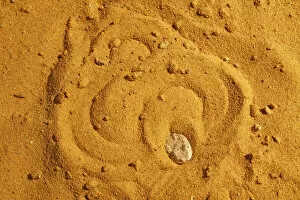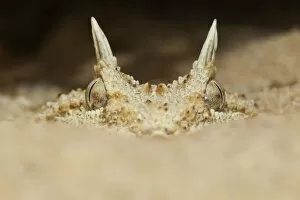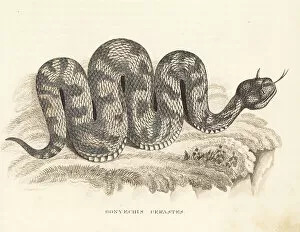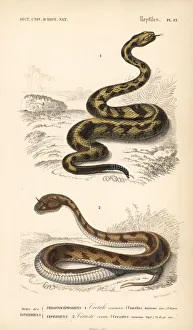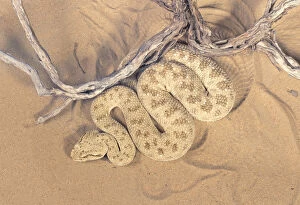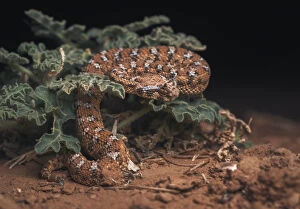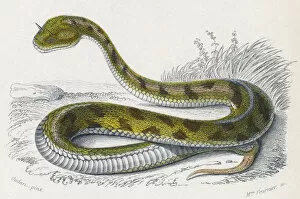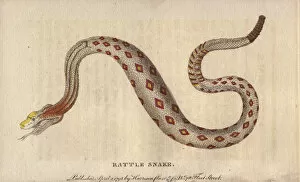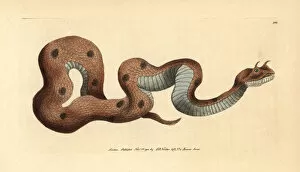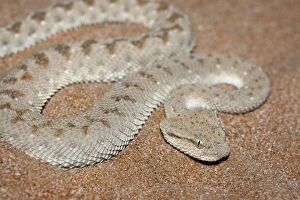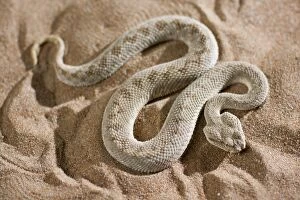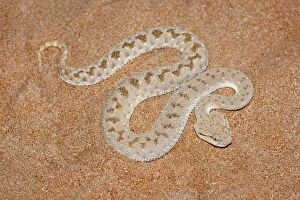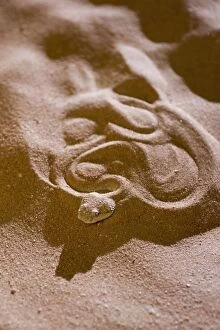Cerastes Collection
"The Enigmatic Cerastes: Masters of Camouflage and Survival" In the vast expanse of the Sahara, a hidden world thrives beneath the scorching sun
All Professionally Made to Order for Quick Shipping
"The Enigmatic Cerastes: Masters of Camouflage and Survival" In the vast expanse of the Sahara, a hidden world thrives beneath the scorching sun. Meet the cerastes, a remarkable group of venomous snakes that have adapted to survive in this harsh desert environment. One such species is the Sahara sand viper (Cerastes vipera), known for its incredible ability to burrow into the sand and disappear from sight. With their sandy-colored scales blending seamlessly with their surroundings, these elusive creatures are masters of camouflage. A captive specimen showcases their unique behavior as it skillfully disappears into its sandy refuge. Another member of this intriguing family is the African horned viper (Cerastes cerastes). This captivating snake boasts prominent horns above its eyes, adding an air of mystique to its already formidable appearance. In captivity, we can marvel at its intricate patterns and observe how it adapts to life in confinement. The desert horned viper (Cerastes cerastes) is yet another fascinating species within this genus. Its name perfectly reflects both its habitat and distinctive features - sharp horns protruding from above each eye. An image captures a mesmerizing encounter between a cascabel rattlesnake and one such desert horned viper, showcasing nature's diversity in all its glory. Venturing further into the realm of serpentine wonders, we discover unexpected encounters between different species like the Sahara sand viper and black asp or even witness astonishing transformations depicted by artists like Martin Bouche who portrays mythical tales where Cerastae morph into bulls while Propoetides turn into rocks. Intriguingly enough, not all members reside solely within deserts; some adapt to other arid landscapes too. The wild desert viper (Cerastes gasperetti) gracefully slithers through UAE's dunes, revealing itself only when necessary. Against a picturesque backdrop adorned with vibrant flora lies this female serpent, showcasing the delicate balance between wild beauty and survival.

